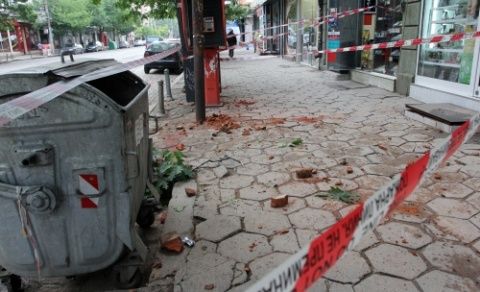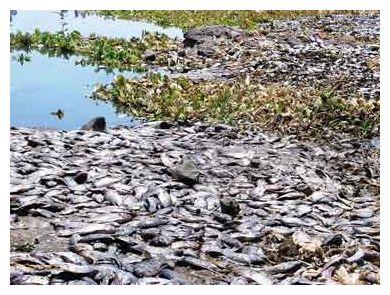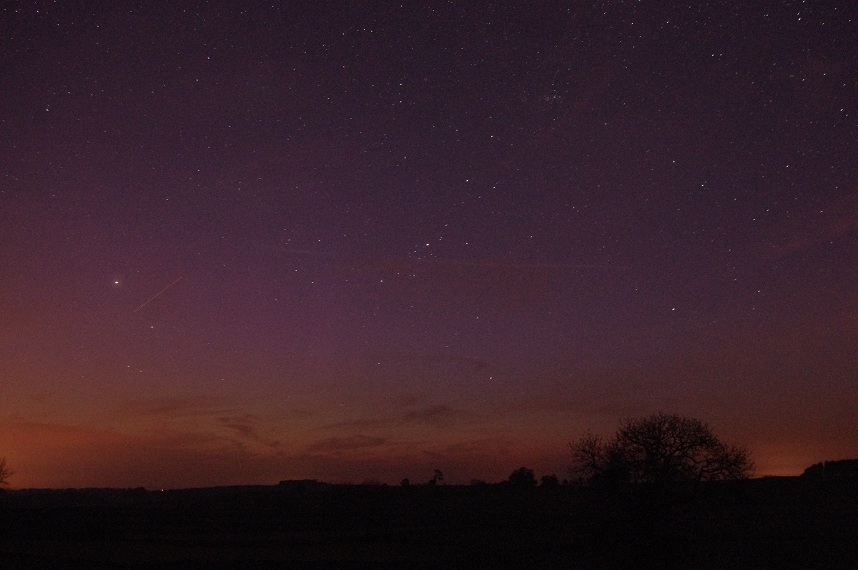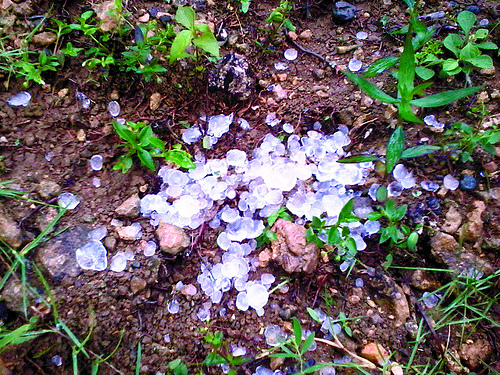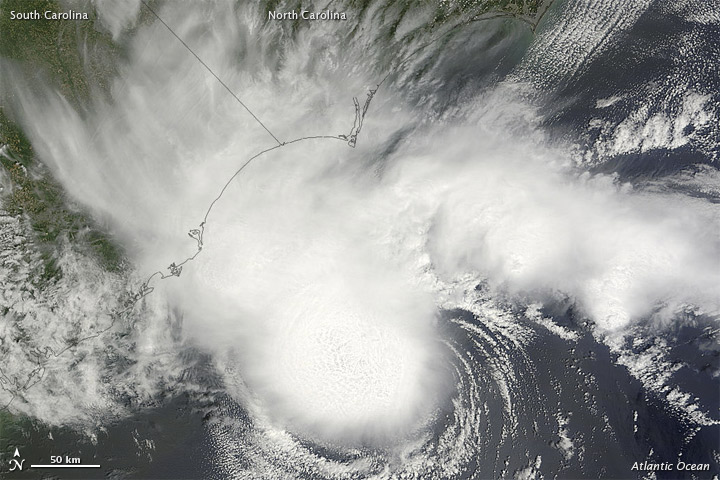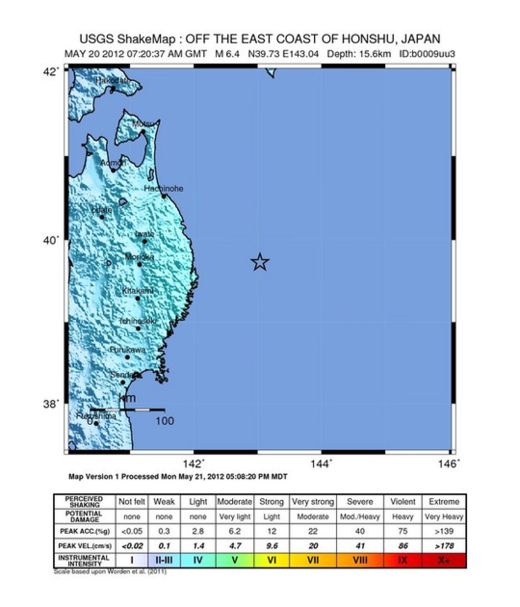
© USGSA map of shaking intensity of the recent aftershock.
An earthquake that ruptured this week off the coast of Japan was one of the largest recent aftershocks to affect an area that, more than a year after one of the most powerful earthquakes on record, is still experiencing a steady stream of seismic jolts.
So far, 5,229 aftershocks have rattled the tectonic boundary that ruptured off the coast of Japan's Tohoku region in March 2011. The magnitude-9.0 earthquake was the
fifth largest earthquake ever recorded.
The Sunday (May 20) quake is listed as both magnitude 6.0 and 6.4. If it proves to be the latter, it would be the largest aftershock since March 14, when a magnitude-6.9 earthquake hit the region.
Magnitude-6.0 quakes can cause serious damage if they hit near populated areas, yet the bulk of Japan's significant aftershocks have hit out at sea, many miles from land, and have caused relatively few problems.
This recent quake caused only light shaking for residents of northern Japan, according to U.S. Geological Survey (USGS) data. It occurred beneath the Pacific Ocean, about 60 miles (96 kilometers) east of Miyako, a coastal town devastated by the
deadly tsunami that followed the March 2011 earthquake.
"With an earthquake this big, you can have aftershocks for months and years," said Paul Earle, a seismologist with the USGS. You can't say when or where they'll happen, he told OurAmazingPlanet, but they tend to decrease in number exponentially.
